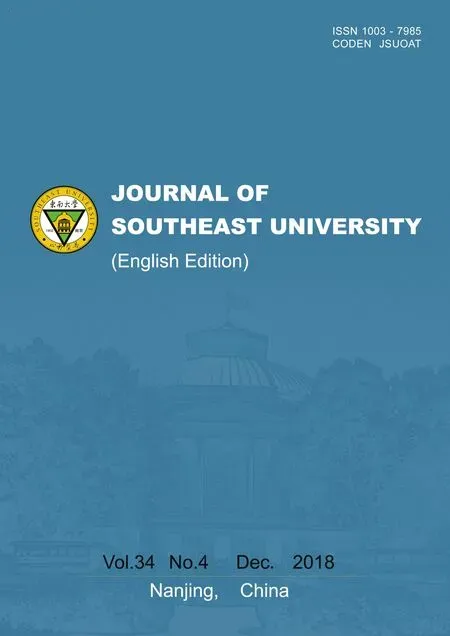Effects of secondary water curing on the long-term strength and durability of concrete after steam-autoclave curing
2019-01-17LiGuoGaoXiang
Li Guo Gao Xiang
(State Key Laboratory for Geo-Mechanics and Deep Underground Engineering, China University of Mining andTechnology, Xuzhou 221116, China)
Abstract:To study the effects of secondary water (SW) curing of 20 ℃ for 7 d on concrete long-term strength and durability after steam-autoclave curing, concrete specimens were fabricated and subjected to standard, steam-autoclave or steam-autoclave + SW curing. The compressive strength, accelerated carbonation depth, and Coulomb electric charges of the specimens were tested at the ages of 28, 90, 180, and 360 d. Furthermore, mercury intrusion porosimetry experiments on the specimens were conducted at the age of 180 d. Results indicate that compared with standard curing, steam-autoclave curing can enhance the early-age strength of concrete; however, it is detrimental to the development of later-age strength, and reduces chloride and carbonation resistance. Due to the replenishment of water into concrete, SW curing can refine the micro-pore size and decrease the ratio of harmful and more harmful pores in concrete. As a result, SW curing is effective in improving the long-term strength and durability of steam-autoclaved concrete, and makes it approach that under standard curing. The improvement amplitudes of SW curing on the concrete compressive strength, chloride and carbonation resistance at 360 d can reach 20.3%, 48.6%, and 80.9%, respectively.
Key words:concrete; steam-autoclave curing; secondary water curing; compressive strength; durability;
Steam-autoclave curing is an accelerated curing method used for concrete and it is typically employed in producing precast concrete members, especially pre-stressed, high-strength concrete (PHC) tubular piles[1-3]. Accelerated curing shortens the production period of concrete members and achieves high concrete strength within a short time[4]. In contrast to steam curing, the 28 d strength of plain concrete after autoclave curing is higher than that under normal curing[4]. Moreover, studies of Yan et al.[5]indicated that the chloride resistance, sulfate corrosion resistance, and freeze-thaw cycle resistance of PHC pile concrete can meet the requirements for durable concrete if only raw materials and a reasonable mixture proportion of PHC pile concrete are used, along with a production process that conforms to the specifications.
However,most studies have confirmed that accelerated curing also causes long-term strength reduction and durability degradation[4,6-10]. Tan et al.[6]compared the compressive strength of concrete under high temperature (65 ℃) and normal temperature (20 ℃) curing, and found that later-age compressive strength decreased for concrete at the initial high temperature curing compared with that at normal curing. Mehta and Gerwick[7]found that steam-cured beams suffered severe corrosion damages after being exposed in a marine environment for 17 years, whereas moist-cured beams showed no signs of corrosion. Furthermore, other studies[8-10]illustrated that accelerated curing by increased temperature leads to porous concrete with coarse and continuous pore structures and a heterogeneous distribution of hydration products, which can increase the permeability of concrete against carbonation and aggressive ions, such as chloride or sulfate ions.
Given the negative effects of accelerated curing on the long-term performance of concrete, many improvement methods have been attempted. Many studies have focused on the addition of new materials into concrete and achieved fruitful results[2,9,11-15]. The study of Yan[2]indicated that the chloride ion penetration performance of steam-autoclaved concrete can be decreased by the incorporation of ground sand or slag. Detwiler et al.[11-12]found that the partial replacement of cement by fly ash, slag, or silica fumes can reduce the chloride ion penetration into the concrete after steam or hot water curing. Aldea et al.[13]studied the effects of slag on the properties of concrete after autoclaving or steam curing compared with normal curing. They observed that increasing slag replacement can decrease chloride permeability and the penetrability of steamed concrete; however, it is of no use to autoclaved concrete and has little effect upon concrete strength.
Apart from the above methods, some other methods have also been utilized. For example, Zhang et al.[3]conducted standard curing for concrete after steam curing, and found that concrete compressive strength and durability properties were improved. Hooton and Titherington[15]indicated that the addition of only 4% silica fume reduced the negative impacts of accelerated steam curing, and that the combination of silica fume addition and 6 d of moist curing can enhance concrete strength and decrease Coulomb values. He et al.[16]investigated the effects of subsequent curing on the properties of steam-cured concrete and found that its exposure to air conditioning had deleterious effects on its properties. Moreover, they found that adopting 20 ℃ subsequent water curing can decrease the capillary water absorption coefficient and the total porosity of the steam-cured concrete. Subsequent moist curing is a potential method to improve the negative impacts of accelerated curing on concrete properties. However, steam-autoclave curing is different from either steam or autoclave curing alone, and so far only a few studies have been published with regards to the effects of subsequent curing on the properties of steam-autoclaved concrete.
The objective of this paper is to study the effects of secondary water (SW) curing on the long-term compressive strength and the chloride and carbonation resistance of concrete after steam-autoclave curing, and to look for a beneficial method to alleviate its negative effects on the long-term strength and durability properties of concrete.
1 Experimental
1.1 Raw materials

Tab.1 Chemical composition of cement %
1.2 Specimen fabrication and curing methods
The designed compressive strength of the concrete is 60 MPa, and the water/cement ratio is 0.32. The concrete mixture proportions of cement,sand,stones,water, and water reducer are 470,660,1 280,150,10.5 kg/m3, respectively. Concrete was mixed with a compulsory mixer, and the slump was controlled at 20 to 50 mm. After mixing, 100 mm × 100 mm × 100 mm cubic specimens for the compressive strength and carbonation depth test, andφ100 mm× 200 mm cylinder specimens for the rapid chloride penetration test were fabricated and demolded 24 h after casting.
Three curing methods, i.e., standard, steam-autoclave and steam-autoclave + SW curing, were adopted. Standard curing was conducted in an artificial climate chamber at the temperature of (20 ± 2) ℃ and RH is 95% until the age of 28 d. Steam-autoclave curing was performed in a two-stage method. The first stage was the steam curing, which was performed in a steam curing pool (see Fig.1), elevating the temperature to (90 ± 5) ℃ for 1.5 h. This temperature was maintained for 3.5 h and then was cooled down to ambient air temperature for 1.5 h. The second stage was performed by placing the specimens into an autoclave (see Fig.2) and then elevating the temperature to (180 ± 5) ℃ under the pressure of (1.0 ± 0.05) MPa for 1.5 h, maintaining for 3 h, and finally it was cooled down for 1.5 h. Steam-autoclave + SW curing was just a continuation of the aforementioned steam-autoclave curing, in which the SW curing of the specimen was conducted in a water tank at 20 ℃ for 7 d after autoclave curing. After the completion of each curing regime, specimens were placed indoor with a natural air environment until the following experiments.
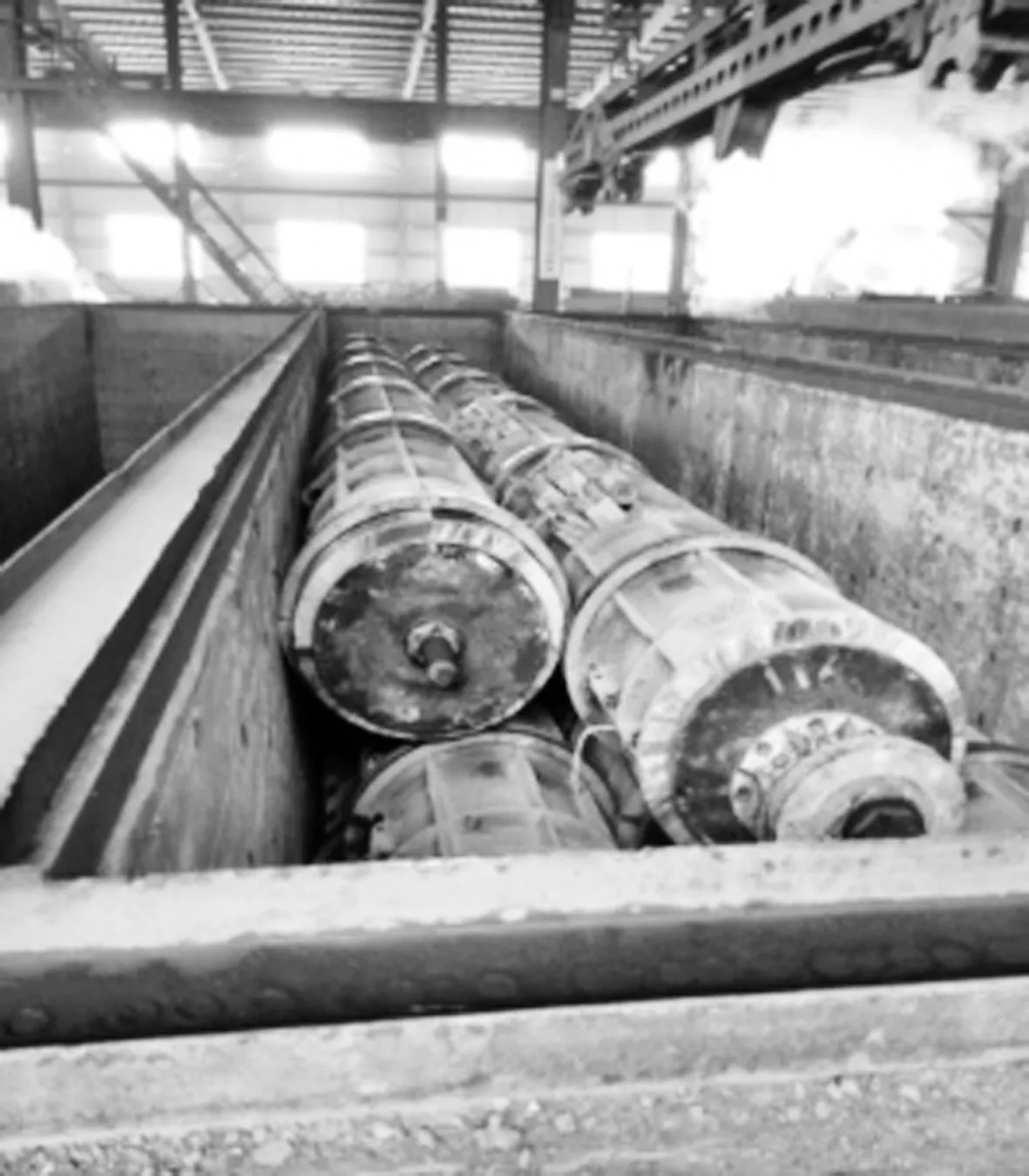
Fig.1 Photo of a steam curing pool
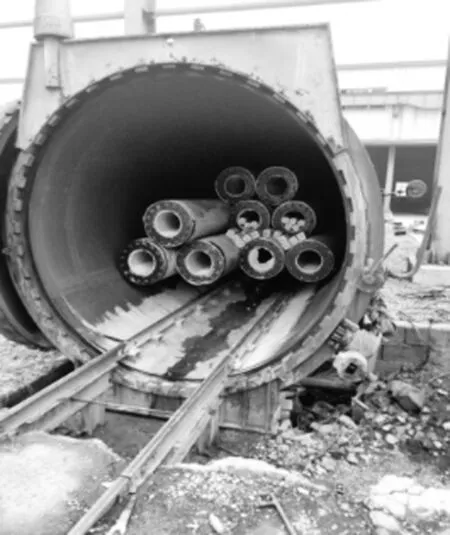
Fig.2 Photo of an autoclave
1.3 Experimental methods
The compressive strength, accelerated carbonation depth, and Coulomb electric charges of the specimens were tested at the ages of 28, 90, 180, and 360 d, in order to study the development of strength and durability performance of concrete after different initial curing regimes. All the experimental data were obtained based on the average value of three identical specimens.
Experiments of concrete compressive strength were performed according to Chinese standard for test method of mechanical properties on ordinary concrete (GB/T50081—2002), whereas concrete accelerated carbonation experiments and Coulomb electric flux experiments were performed according to the Chinese standard for test methods of long-term performance and durability of ordinary concrete (GB/T 50082—2009). Compressive strength experiments were conducted using an automatic constant stress testing machine, and concrete carbonation experiments were conducted in an accelerated carbonation chamber under the temperature of (20 ± 2) ℃, the RH of (70% ± 5%) and the CO2concentration of (20% ± 3%) for 10 d. Phenolphthalein indicator was used to measure concrete carbonation depth.
Prior to the chloride resistance test, a cylindrical specimen was sawn into three cylindrical pieces (φ100 mm50 mm) using a rock cutting machine. The traditional evaluation method for the chloride resistance of concrete is performed by measuring the 6-h electric charges of concrete according to the ASTM C1202 Standard[11-15,17-19]. However, when the current level is high, it can result in heating during the test due to the Joule’s Law, which then leads to higher measured Coulomb values[20]. This phenomenon is especially evident in concrete after accelerated curing, which may sometimes lead to the test solution boiling[13]. To avoid this error, a modified ASTM C1202 method for a rapid chloride permeability test[21]was adopted, in which the final Coulomb value was the electric charge in the initial 30 min multiplied by 12.
To study the micro-pore structures in concrete after different initial curing methods, mortar samples (diameter of about 5 mm) without aggregate were cut out and separated from the surface layer (about 20 mm deep from the surface) of concrete specimens at the age of 180 d , and dried for 24 h at 60 ℃, then soaked in anhydrous ethanol to stop the hydration before testing. Mercury intrusion porosimetry (MIP) experiments were conducted using an AutoPore IV 9510 apparatus (Micromeritics Instrument Corp.).
2 Results and Discussion
2.1 Concrete compressive strength after different curing regimes
Fig.3 presents the strength development of concrete following different curing conditions. As can be seen, different curing methods affected the development of concrete strength. Due to the acceleration effects of high temperature and pressure on the hydration of cement, the strength of concrete under steam-autoclave or steam-autoclave+SW curing at 28 d was higher than that under standard curing. Compared with concrete after standard curing, the enhancements in strength of concrete after steam-autoclave and steam-autoclave+SW curing were 10.6 and 12.9 MPa, and the relative improvements reached 15.9% and 19.4%, respectively.
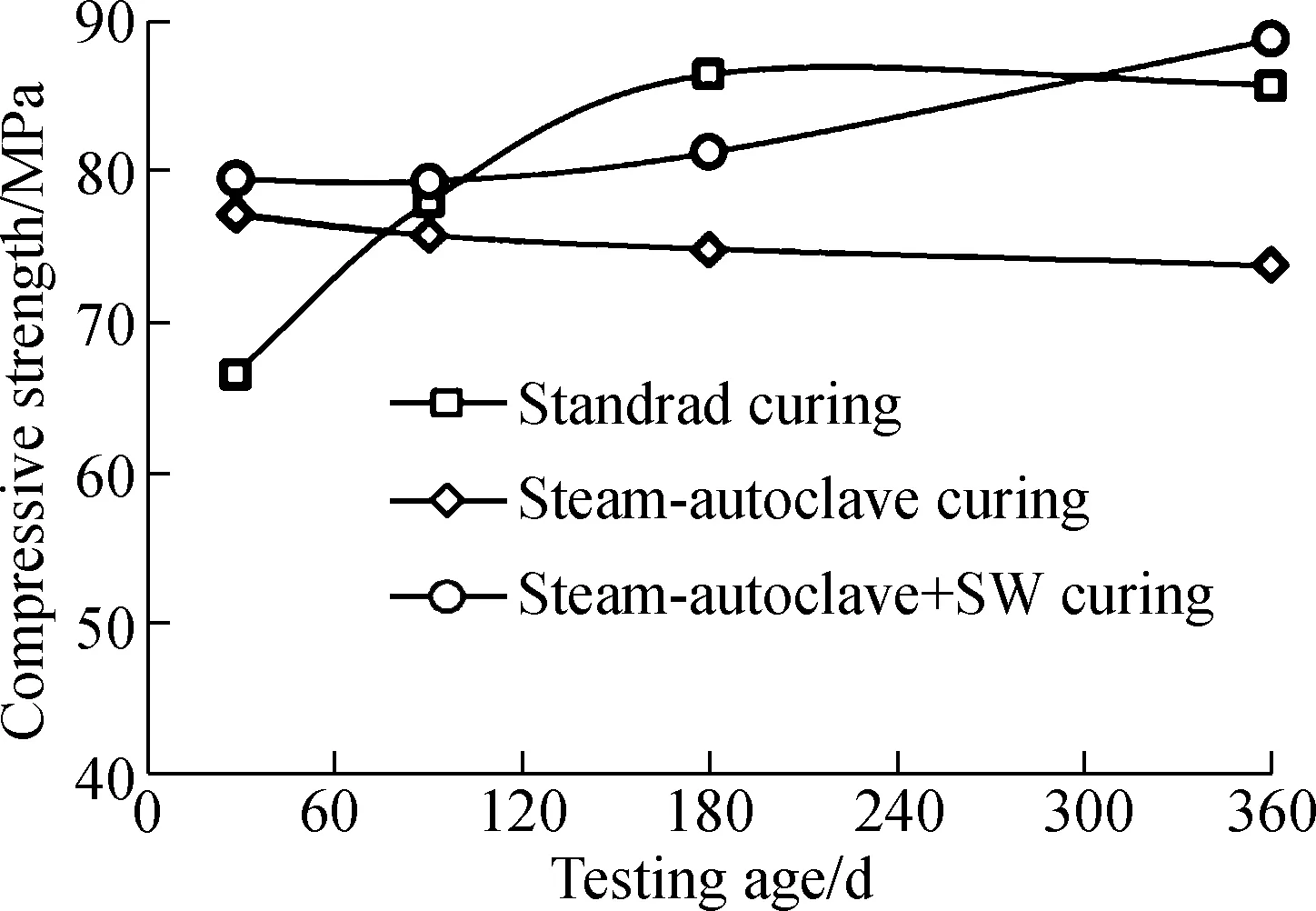
Fig.3 Strength development of concrete after different curing regimes
In addition,concrete strength gradually increased with age until 180 d for standard curing, with the strength of 85.8 MPa at 360 d being approximately 28.8% higher than that at 28 d. The concrete strength did not increase with age but exhibited a descending trend for steam-autoclave curing, which was 73.8 MPa at 360 d with the reduction ratio of 4.4%. Compared with standard curing, concrete strength was reduced by 14% for steam-autoclave curing. Thus, although steam-autoclave curing can enhance the early-age strength of concrete, it is detrimental to the development of long-term strength[1,6].
The hydration of cementitious materials in concrete cannot occur without water[22]. Concrete usually contains a large amount of water even after curing due to the high humidity in normal curing. Hence, the unhydrated cementitious material particles can still be hydrated and produce more hydration products. However, the moisture in concrete can evaporate during the cooling process in steam or autoclave curing, especially in the case of steam-autoclave curing, which leads to a significant reduction in concrete water content. The SW curing can provide an opportunity to supply water into steam-autoclaved concrete and further improve the long-term strength of the concrete.
As expected, steam-autoclave+SW curing produced good effects on concrete strength (see Fig.3). Corresponding to the age of 28 d, the strength of concrete after steam-autoclave+SW curing was 79.5 MPa, slightly higher than that of concrete under steam-autoclave curing. Meanwhile, unlike concrete after steam-autoclave curing, the strength of concrete under steam-autoclave+SW curing exhibited continuous increase with age. As for the age of 360 d, it reached 88.8 MPa, which is 20.3% higher than that of steam-autoclave curing and even higher than that after standard curing. Thus, SW curing can improve the long-term strength of steam-autoclaved concrete. In other words, SW curing can achieve a high early-age concrete strength and a high long-term strength using the steam-autoclave + SW curing method.
2.2 Concrete chloride resistance after different curing regimes
The Coulomb electric charges of concrete following different curing methods are presented in Fig.4. The results show that different curing methods affect the electric charge of concrete at different testing ages.
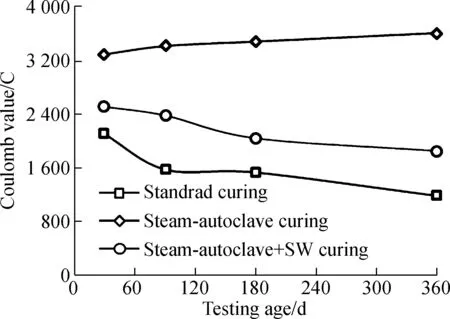
Fig.4 Coulomb electric charges of concrete after different curing regimes
The concretes under steam-autoclave curing exhibited the highest Coulomb value, whereas those under standard curing had the lowest values; i.e., the chloride resistance of concretes under steam-autoclave curing was the lowest and that under standard curing was the highest. The obtained results confirmed the existing knowledge that accelerated curing decreases concrete chloride resistance[2,5,11-14]. Similar to the influence of SW curing on the strength of steam-autoclaved concrete, SW curing is also effective in improving the chloride resistance of steam-autoclaved concrete. Compared with those of steam-autoclaved concrete, the Coulomb values of the concrete under steam-autoclave+SW curing decreased by 23.6% at 28 d and by 48.6% at 360 d. Based on the ASTM C1202 standard, although the Coulomb value of the concrete after steam-autoclave + SW curing at the age of 360 d was still higher than that after standard curing, SW curing decreased the chloride resistance of steam-autoclaved concrete from a middle to a low grade.
It is worth noting that the developments of Coulomb values with testing age are different for concretes under different curing methods. The Coulomb values of concretes after standard curing or steam-autoclave + SW curing tend to decrease with the testing age, whereas those after steam-autoclave curing exhibit an ascending trend with the testing age. Therefore, the Coulomb value differences between steam-autoclave and steam-autoclave+SW curing or standard curing become increasingly higher, which can be attributed to the residual water in concrete at standard curing or steam-autoclave+SW curing that continues the hydration of unhydrated cement particles and makes concrete denser[12,23].
Chloride diffusion coefficients and Coulomb values are indices inflecting the chloride resistance of concrete. Based on the Coulomb values obtained, the chloride diffusion coefficients of concrete under different initial curing regimes can be calculated and listed in Tab.2 using Feng’s equation[24]. This equation is expressed as
y=2.577 65+0.004 92x
(1)
whereyrefers to the chloride ion diffusion coefficient, 10-9cm2/s; andxrefers to the Coulomb value in 6 h/C.

Tab.2 Chloride ion diffusion coefficients of concrete after different curing regimes 10-9cm2/s
Due to the beneficial effects of SW curing, the chloride diffusion coefficients of concrete after steam-autoclave+SW curing were reduced, and the improvements became more obvious with testing age. Corresponding to the age of 360 d, the chloride diffusion coefficient of concrete after steam-autoclave+SW curing dropped to 0.58 times of that after steam-autoclave curing. Therefore, SW curing can lengthen the predicted service life of steam-autoclaved concrete members even when exposed to a harsh marine environment.
2.3 Concrete carbonation resistance after different curing regimes
Fig.5 presents the carbonation depth of concrete after different initial curing regimes.As can be seen, the carbonation depths of concretes with different initial curing regimes varied despite using the same concrete material. Moreover, the carbonation depths were different for the same concrete at different testing ages. Corresponding to the same testing age, the carbonation depth of concrete under steam-autoclave curing is usually the highest, that under steam-autoclave+SW curing comes next, and that under standard curing is the lowest. In other words, concrete under steam-autoclave curing has the lowest
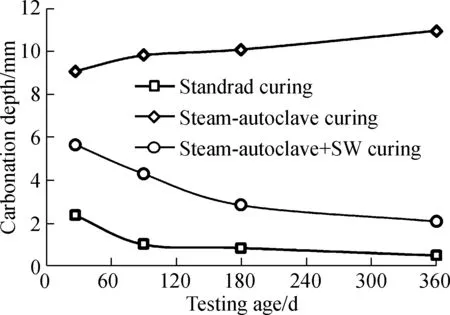
Fig.5 Carbonation depth of concrete after different curing regimes
carbonation resistance, followed by concrete under steam-autoclave+SW curing; meanwhile, concrete under standard curing has the best carbonation resistance.
Based on the results of concrete carbonation depths, the carbonation coefficients are listed in Tab.3 and can be calculated as[25]
(2)
wherekis the concrete carbonation resistance index, mm/year;xis the concrete carbonation depth, mm;qCO2is the environmental CO2concentration,%; andtis the concrete carbonation time, year. The concentration of CO2in natural atmosphere is assumed to be 0.035%
Tab.3Carbonation coefficients of concrete after different curing regimes

mm/year
Due to the actions of high temperature and air pressure, steam-autoclave curing caused great damage to concrete carbonation resistance. Among the three curing regimes, the carbonation coefficient of concrete under steam-autoclave curing was the highest. On the contrary, concrete under standard curing had the best carbonation resistance. Corresponding to the ages of 28 and 360 d, the carbonation coefficients of concrete under steam-autoclave curing were approximately 3.8 and 21.4 times that under standard curing. However, although the concrete suffered from the same steam-autoclave curing, the results of concrete behavior under steam-autoclave + SW curing were not bad. Surprisingly, due to the continuation of 7 d water curing, the carbonation velocity of concrete under steam-autoclave+SW curing decreased by 37.8% and 80.9% of that under steam-autoclave curing at the testing ages of 28 and 360 d, respectively. These findings suggest that SW curing is effective in reducing the concrete carbonation velocity for steam-autoclaved concrete.
2.4 Pore structure in concrete after different curing regimes
The pore structure in concrete determines the ingress of different corrosive agents into concrete and is thus directly related to concrete chloride resistance[26-27]. The MIP results of concrete under different curing conditions at the age of 180 d are listed in Tab.4. Based on the classification of micro-pores within concrete proposed by Wu[28], harmless (< 20 nm), less harmful (20 to 50 nm), harmful (50 to 200 nm), and more harmful (>200 nm) pore diameter distribution in concrete after different curing regimes are shown in Fig.6.
Tab.4MIP results of concrete after different curing regimes

Item Porosity/%Average pore diameter/nmMost probable aperture/nmStandard curing6.5436.84.52Steam-autoclave curing18.2547.326.27Steam-autoclave + SW cu-ring16.413.56.03
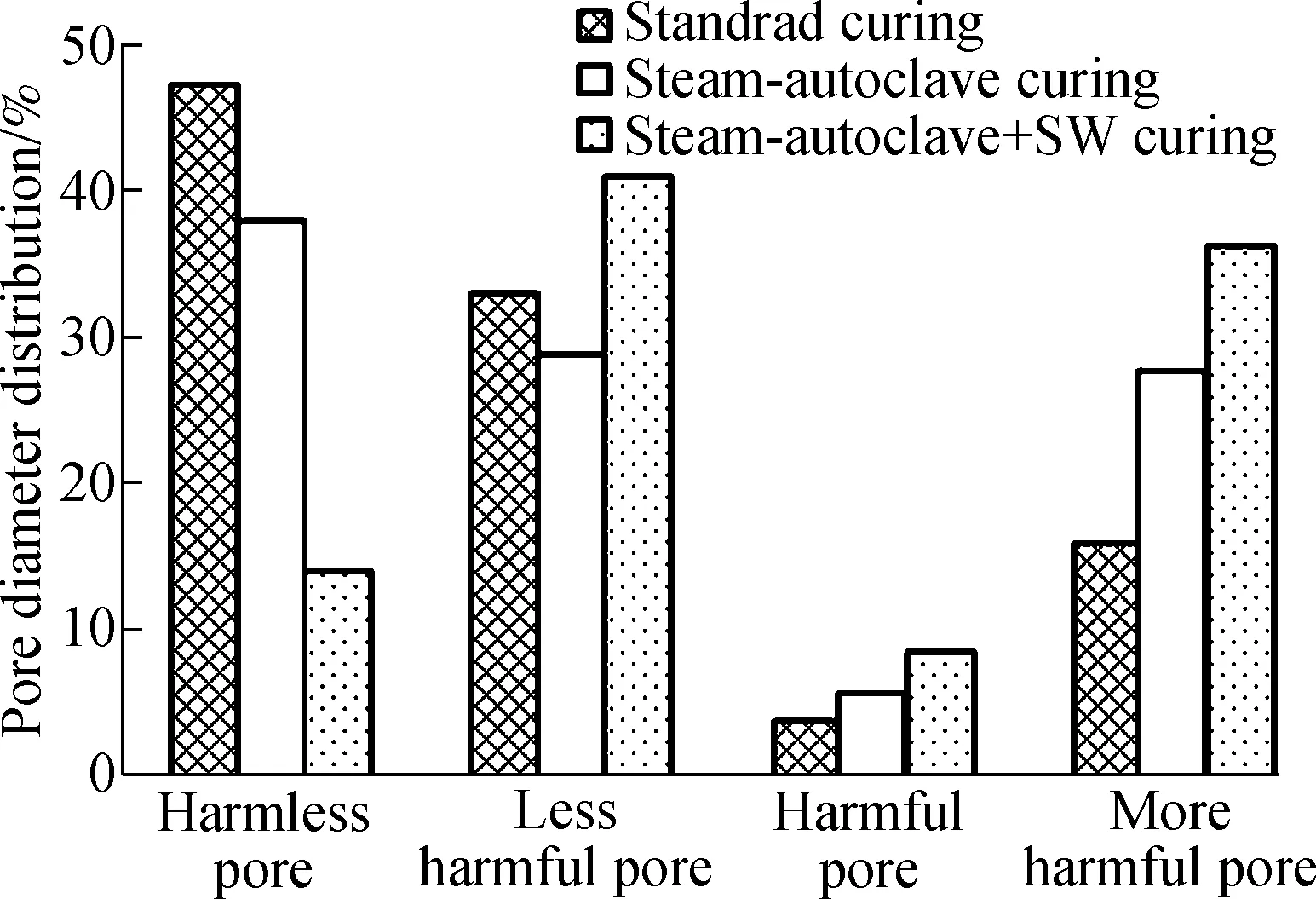
Fig.6 Pore diameter distribution in concrete after different curing regimes
Concrete is a multicomponent and heterogeneous system with significant differences in expansion coefficients among cement stone, mortar, and coarse aggregate in concrete[29]. The high atmospheric pressure during the process of autoclave curing cannot stop the increase in micro-pore diameter and the porosity in concrete with an increase in curing temperature. Compared with standard curing, steam-autoclave curing increased the concrete porosity 2.8 times (see Tab.4). Moreover, the ratio of harmful pores and more harmful pores in steam-autoclaved concrete reached 2.28 and 2.29 times that of standard cured concrete (see Fig.6). The increase in porosity and the ratio of harmful and more harmful pores in steam-autoclaved concrete means that the reduction in concrete density enables the aggressive mediums, such as chloride ions and CO2, to penetrate into the concrete, thus causing a drop in concrete strength and durability performance, which is consistent with the previous experimental results in compressive strength, Coulomb values, and accelerated carbonation depth for steam-autoclaved concrete.
Compared with steam-autoclave curing, the application of SW curing decreased the porosity of steam-autoclaved concrete, and the decreased amplitude for porosity, average pore diameter, and most probable aperture were approximately 10.1%, 71.5%, and 53.3%, respectively. Although the reduction in concrete porosity is not obvious, the drops in average pore diameter and most probable aperture are significant. More importantly, the ratios of harmful and more harmful pores in concrete have been reduced, which is beneficial in reducing the penetration risk of chloride ions and CO2into concrete. Evidently, SW curing can refine the micro-pore size in steam-autoclaved concrete and decrease the ratio of harmful and more harmful pores, thereby contributing to the improvement in the strength, chloride ions, and carbonation resistance for steam-autoclaved concrete.
3 Conclusions
1) Compared with standard curing, steam-autoclave curing can achieve high early-age strength of concrete. However, it also increases concrete porosity and harmful pore ratio, which is detrimental to the development of later-age strength and can decrease chloride and carbonation resistance.
2) SW curing can replenish water in steam-autoclaved concrete, refine the micro-pore size, and decrease the ratio of harmful and more harmful pores in concrete. As a result, SW curing is beneficial for improving the long-term strength and durability performance of steam-autoclaved concrete, and makes it approach that under standard curing.
3) Although SW curing is very simple, it is very effective in eliminating the negative effects of steam-autoclave curing on concrete. The improvement amplitudes of SW curing on long-term compressive strength, chloride and carbonation resistance at the testing age of 360 d can reach 20.3%, 48.6%, and 80.9%, respectively.
杂志排行
Journal of Southeast University(English Edition)的其它文章
- Failure load prediction of adhesive joints under different stressstates over the service temperature range of automobiles
- Effect of fiber type on the bending and uniaxial tensile properties of high-strength high-ductility cementitious composites
- Multi-target range and velocity measurements of a digital phased array radar system
- Variable structure control for descriptor Markovian jump systems subject to partially unknown transition probabilities
- Cooperative spectrum sensing algorithm based on bilateral threshold selection against Byzantine attack
- Joint resource allocation scheme based on evolutionary game for mobile edge computing
